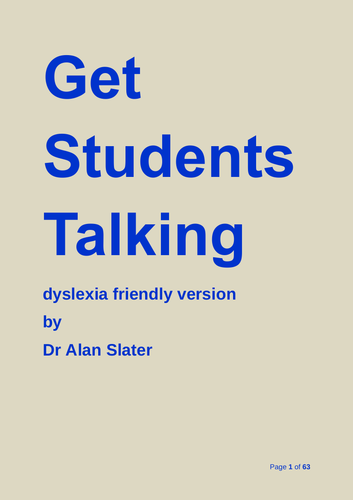

There is good evidence that the better student’s language skills, the better are their life chances in, and beyond, school. Students can make significant gains with these resources. This wonderful collection of fantastic resources will help to get students talking, sharing, caring and making sense of what is being said.
Advantages of using these resources include: getting students more actively involved in their learning, developing deeper understanding, widening vocabulary and social interaction skills, improving presentation techniques in a safe environment, enhancing listening skills, developing student curiosity, questioning, reasoning, analysis, explaining, justifying, understanding, boosting their self-esteem, developing their confidence, giving them exposure and experience in being reflective, and cultivating a sense of joy of learning and a sense of purpose. Each task is suggestive and adaptive/flexible. Each task could be a starter, a plenary, a break out session, a small group activity, an inclusion, enrichment, extended task and they can be used across the curriculum and beyond for consolidation. Students learn about sounds and emphasis, word choices and word combinations, phonics, spoken content, talking construction, deconstruction, emphasis, imagery, what is missing from a line of reasoning, types of questioning, cooperation and through practice and reflection. They learn from each other and about themselves. You know students benefit if they are involved, so let them organise and lead on some of the activities whilst the teacher plays other roles such as facilitator, coach or assistant.
Drawing from current users of these resources, here are some hints and tips on making your use of these resources a great success:
Make time for students to allow them to think.
Make time for them to talk to each other.
Give them time to practice and improve.
Encourage active listening.
Encourage students to give feedback to other students.
Support the use of a mix of questioning.
Promote different scenarios.
Get them to help rearrange the room if it helps.
Try some activities outside the regular classroom.
Use props, sticky labels, mini-whiteboards, flip-charts, diagrams, coloured paper, pictures, drama.
Encourage students to take notes and reflect on what is said and written and felt.
Allow students to take the lead on occasion.
Help your students develop their set of key words and phrases.
Give your students plenty of opportunities to develop a wide variety of presentation skills using various formats and forums.
Something went wrong, please try again later.
This resource hasn't been reviewed yet
To ensure quality for our reviews, only customers who have purchased this resource can review it
Report this resourceto let us know if it violates our terms and conditions.
Our customer service team will review your report and will be in touch.